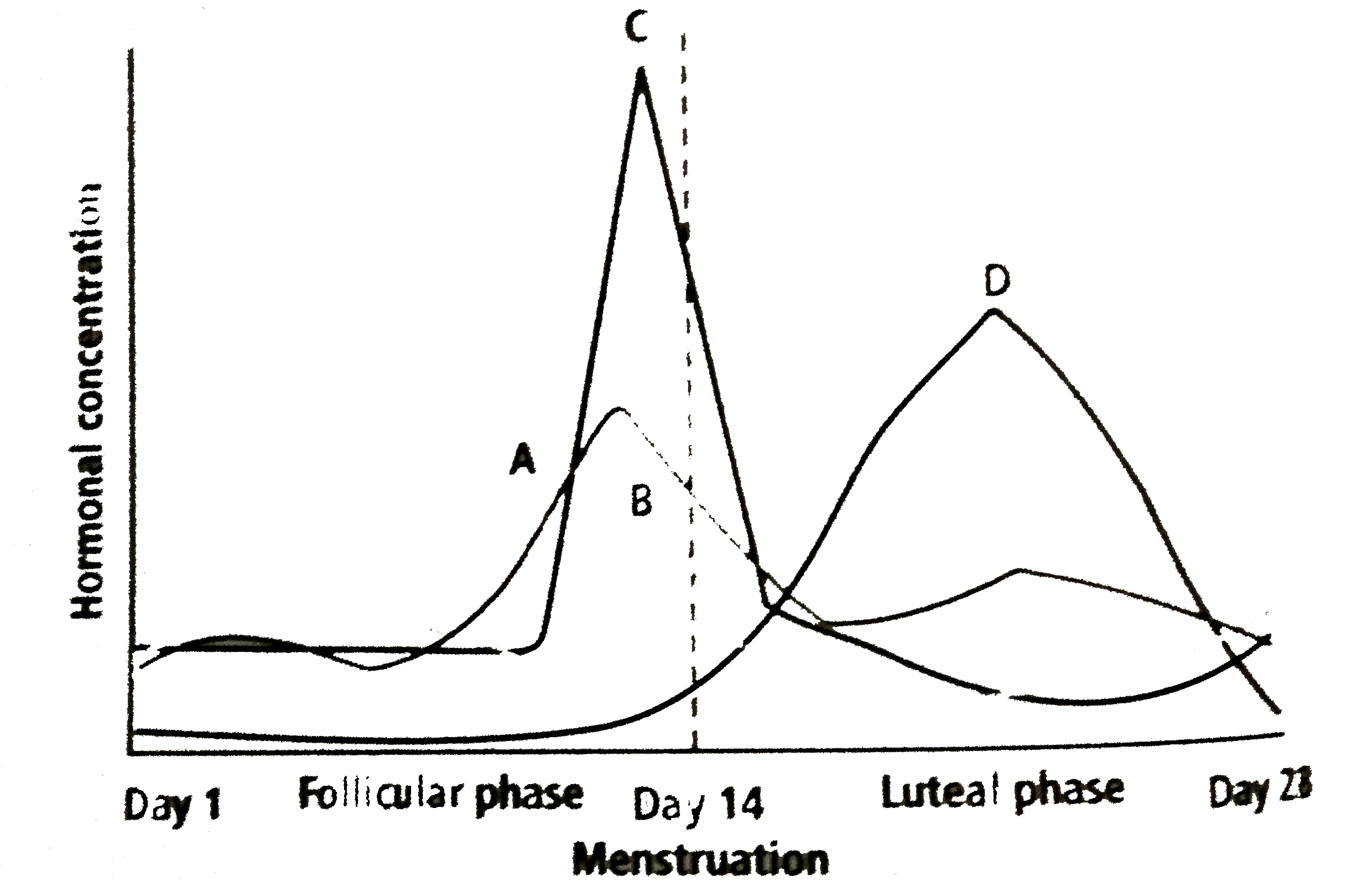During menstrual phase, uterine endomestrium, epthelial glands and connective tissues are broken. This is due to
Over production of progesterone
Lack of progesterone
Over secretion of FSH
Lack of estrogen.
The correct Answer is:B
Step-by-Step Solution:
1. Understanding the Menstrual Phase: The menstrual phase is part of the menstrual cycle where the uterine lining (endometrium), epithelial glands, and connective tissues are shed if fertilization does not occur.
2. Hormonal Regulation: The menstrual cycle is regulated by hormones, primarily estrogen and progesterone. These hormones play crucial roles in preparing the endometrium for potential implantation of a fertilized egg.
3. Role of Progesterone: Progesterone is produced by the corpus luteum after ovulation. It helps maintain the endometrium and prevents its breakdown. If pregnancy does not occur, the corpus luteum degenerates, leading to a decrease in progesterone levels.
4. Consequences of Low Progesterone: When progesterone levels drop, the support for the endometrium is lost. This causes the endometrial lining to break down and be shed, leading to menstruation.
5. Identifying the Cause: The question asks for the reason behind the breakdown of the uterine endometrium, epithelial glands, and connective tissues during the menstrual phase. Since this breakdown occurs due to the lack of progesterone, the correct answer is option B.
6. Conclusion: The breakdown of the uterine lining during the menstrual phase is primarily due to the lack of progesterone, which is essential for maintaining the endometrial tissue.
Final Answer: The breakdown of the uterine endometrium, epithelial glands, and connective tissues during the menstrual phase is due to the lack of progesterone (Option B).
---
Topper's Solved these Questions
Similar Questions
Knowledge Check
- Question 1 - Select One
Refer to the given graph representing interplay of different hormones (A-D) during menstrual cycle in women and answer the question that follow.

Which hormones is most effective in producing uterine changes during menstrual cycle?AABBCCDD
Which Statement among the following are CORRECT ?
I. The upper surface of the tongue has small projections called papillae, some of which bear taste buds.
II. The serosa is the innermost layer of the alimentary canal and is made up of a thin mesothelium ( epithelium of visceral organs ) with some connective tissue .
III. The liver is the largest glands of the body weighing about 4.3 to 5 kg in an adult human.
IV. During the process of digestion, the stomach stores the food for 2 - 3 hours.
(a) I and III
(b) II and IV
(c) I and IV
(d) II and IIIView SolutionDuring luteal phase, which hormone stimulates the uterine glands to produce watery mucus?
View SolutionThe white blood cells move more easily through connective tissues due to the
View Solution(a) Explain the menstrual phase in a human female. State the levels of ovarian and pituitary hormones during this phase.
(b) Why is follicular phase in the menstrual cycle also referred as proliferative phase ? Explain.
(c) Explain the events that occur in a graffian follicle at the time of ovulation and there after. (d) Draw a graffian follicle and label antrum and secondary oocyte.View Solution(a) Explain the menstrual phase in a human female. State the levels of ovarian and pituitary hormones during this phase.
(b) Why is follicular phase in the menstrual cycle also referred as proliferative phase ? Explain.
(c) Explain the events that occur in a Graafian follicle at the time of ovulation and thereafter.
(d) Draw a Graafian follicle and label antrum and secondary oocyte.View SolutionSelect correct statements related to the human female reproductive system
i. The wall of the uterus has three layers of tissue i.e., mesometrium,
ii. The endometrium is the inner glandular layers that lines the uterine cavity.
iii. Myometrium is the middle thick layer of smooth muscle which exhibits strong contraction during delivery of the baby.
iv. The endometrium undergoes cyclical changes during the menstrual cycle.
(a) i and iv
(b) ii and iv
(c) ii, iii and iv
(d) i,ii,iii and ivView SolutionAll the events of the menstrual cycle stop and there is no menstruation during pregnancy is due to
View Solution

